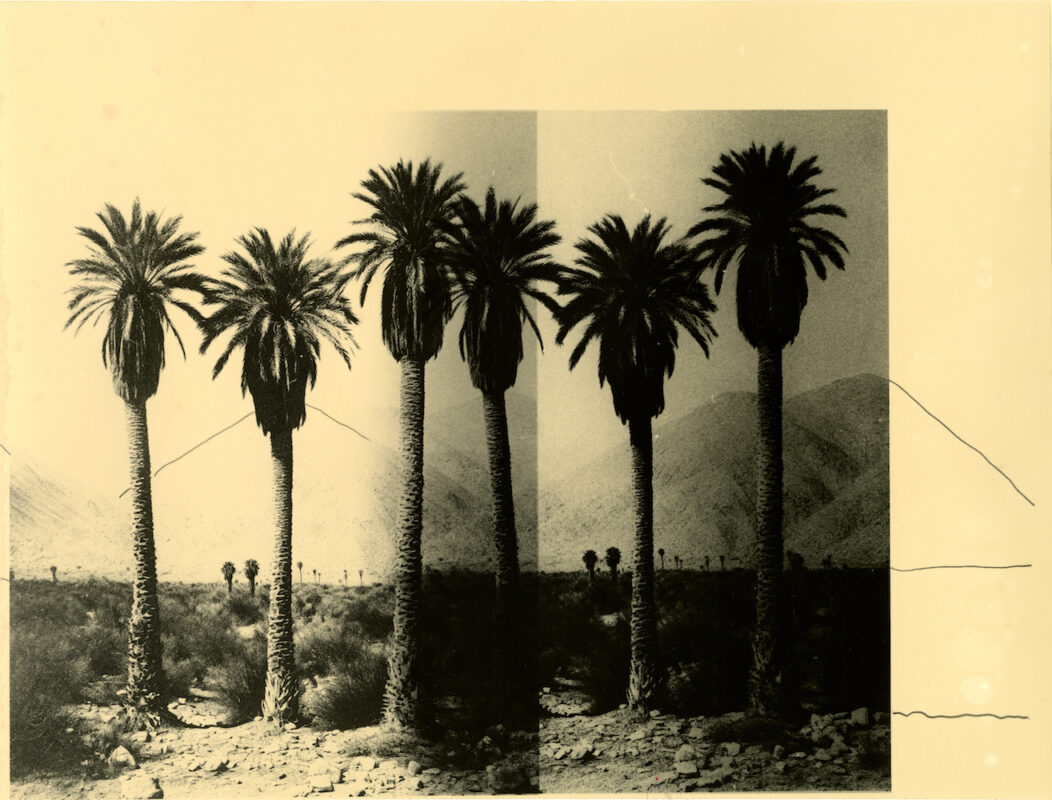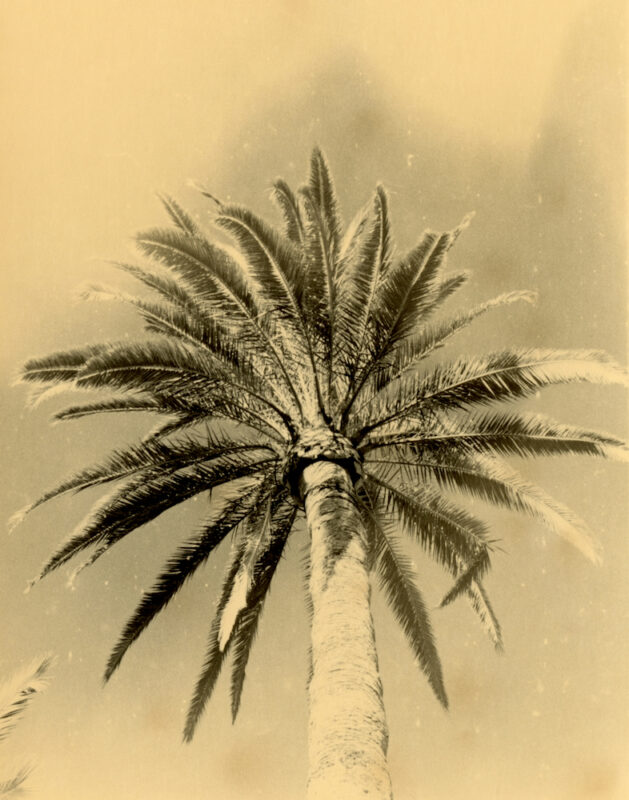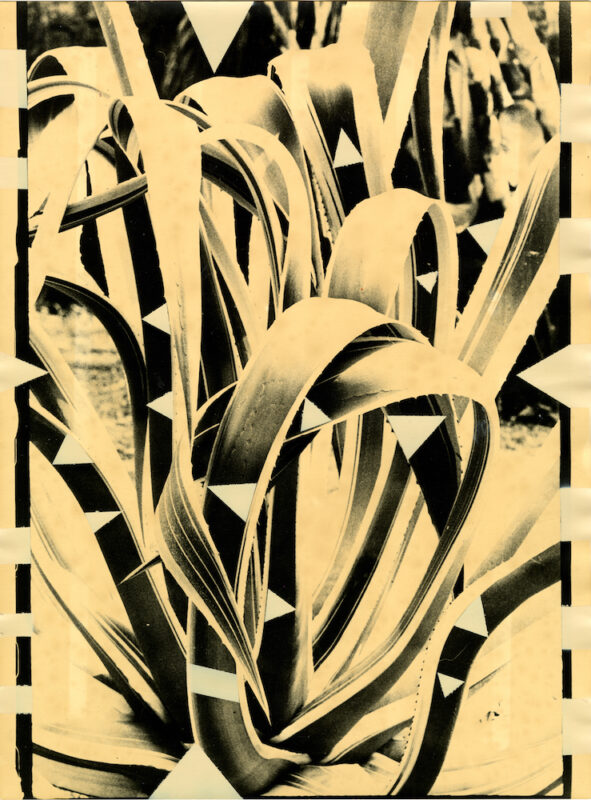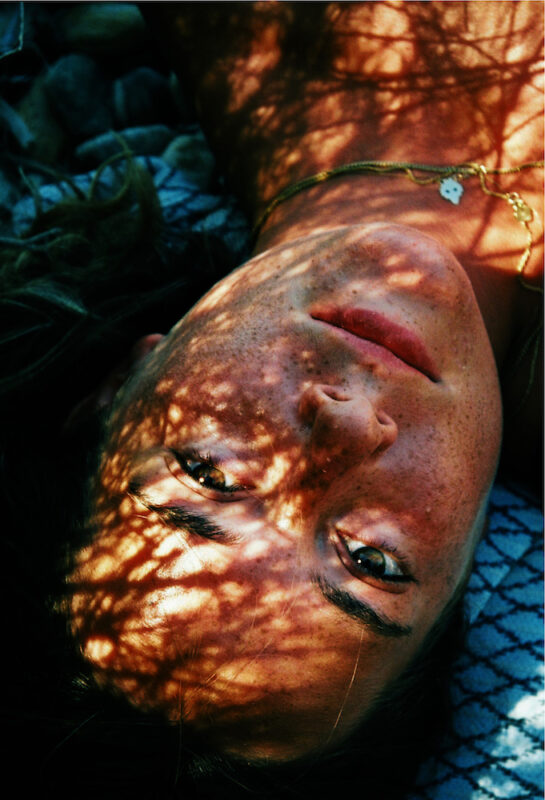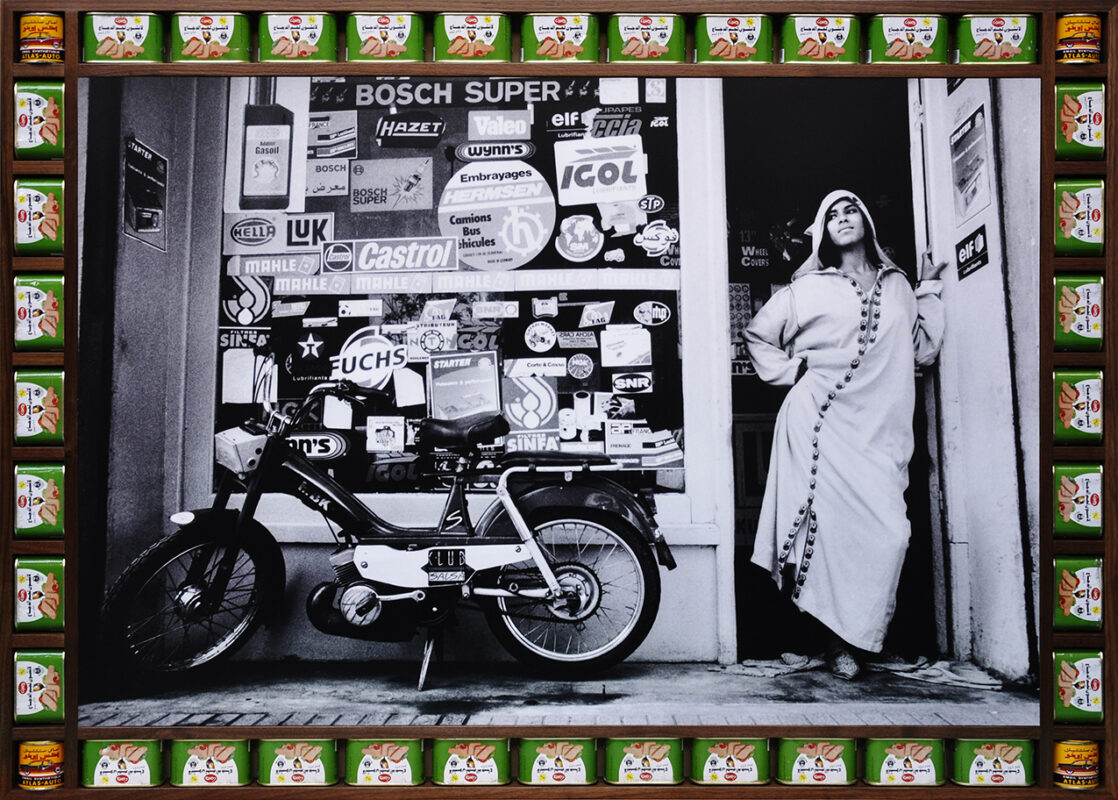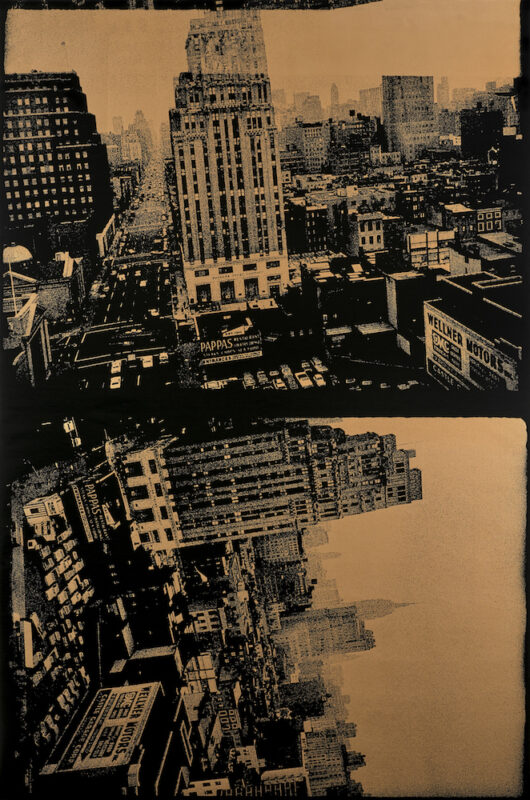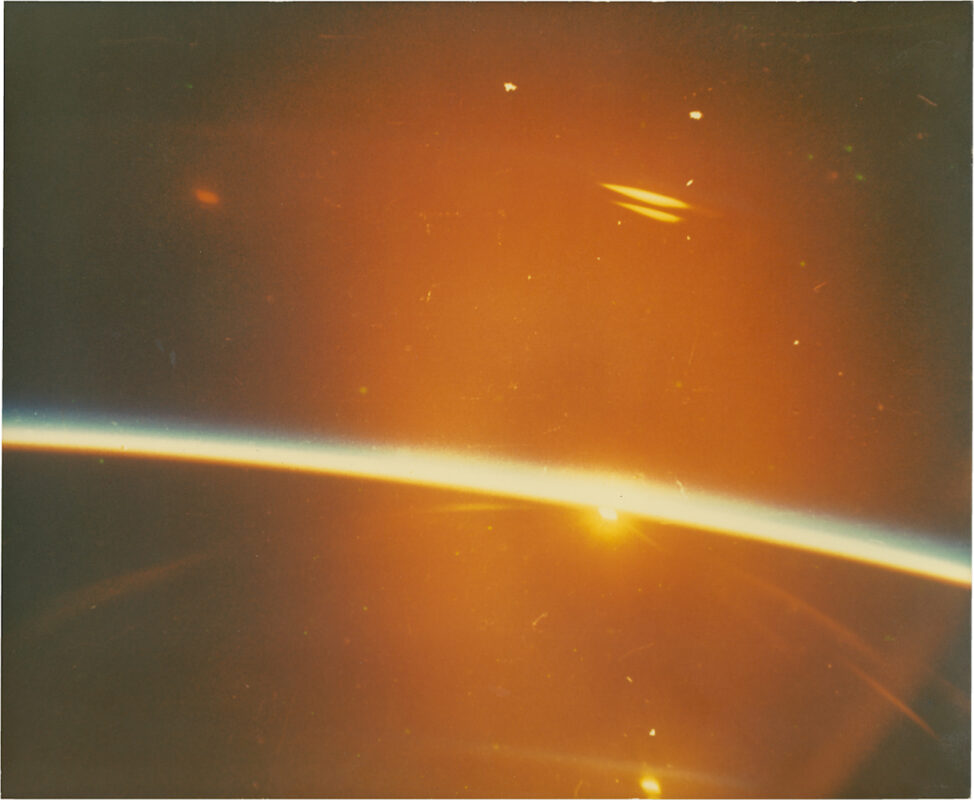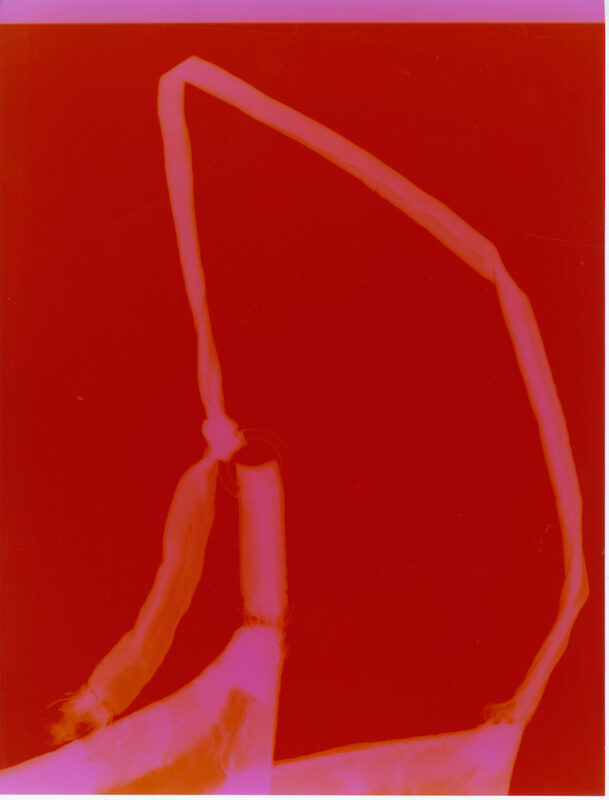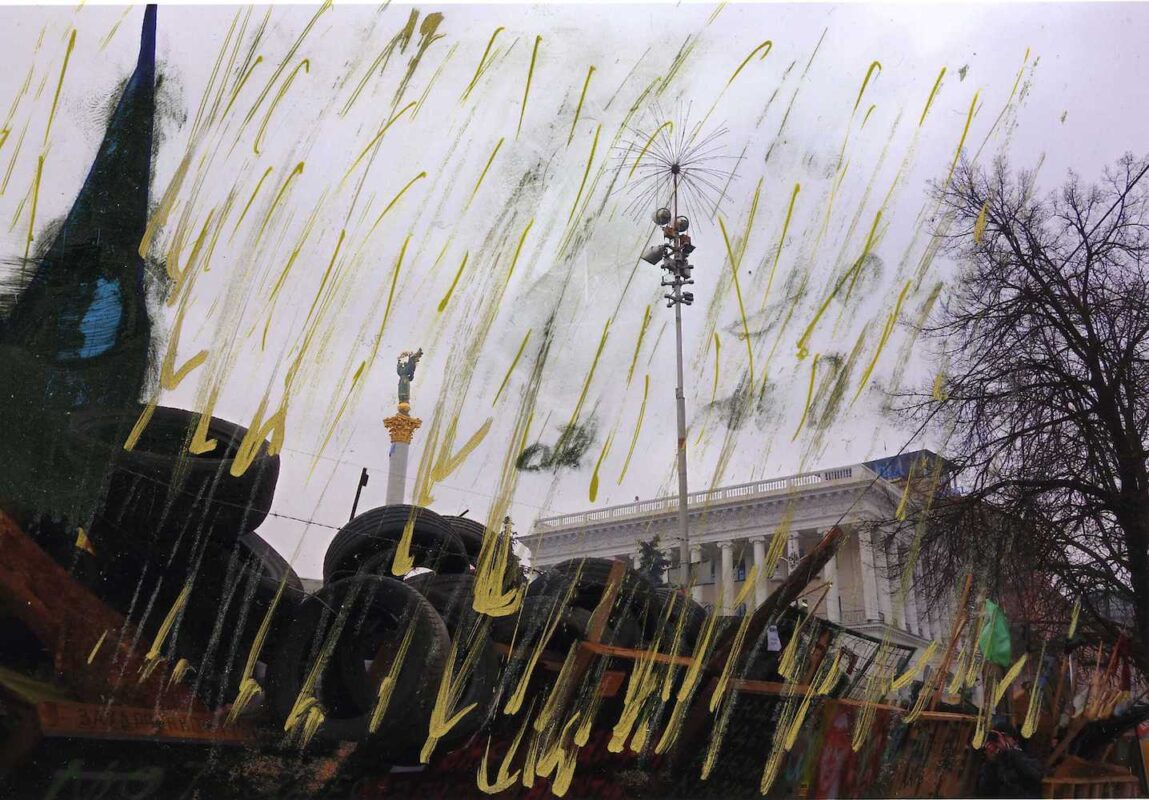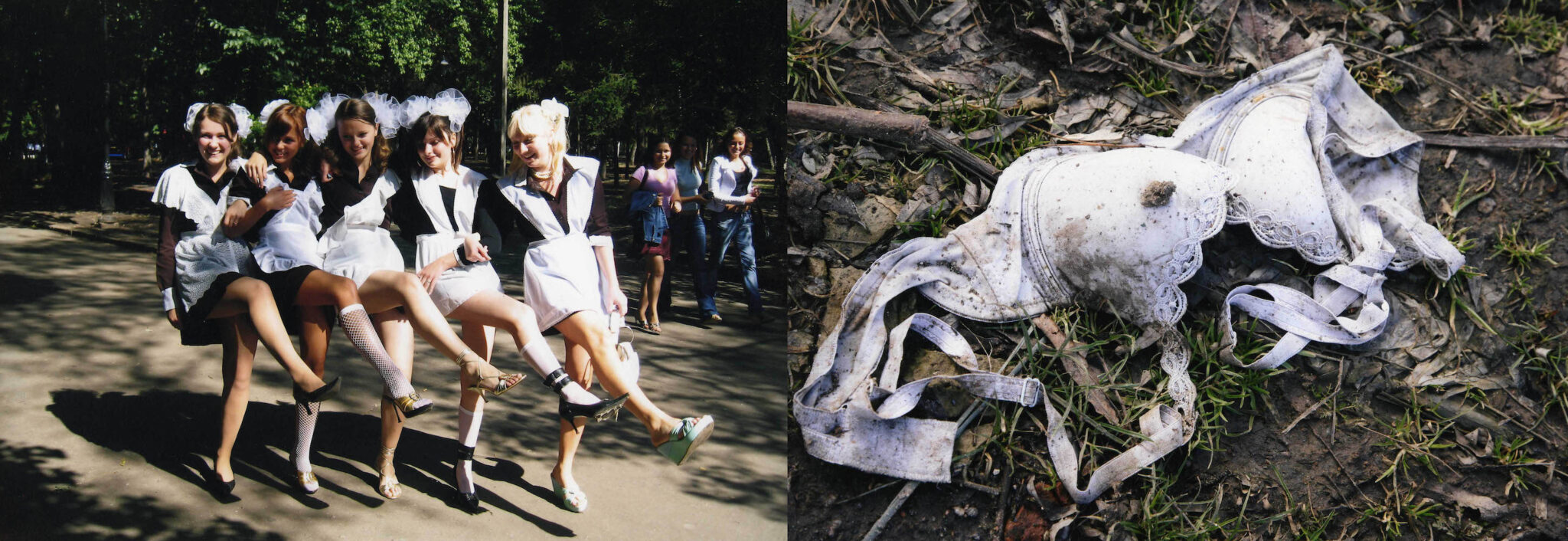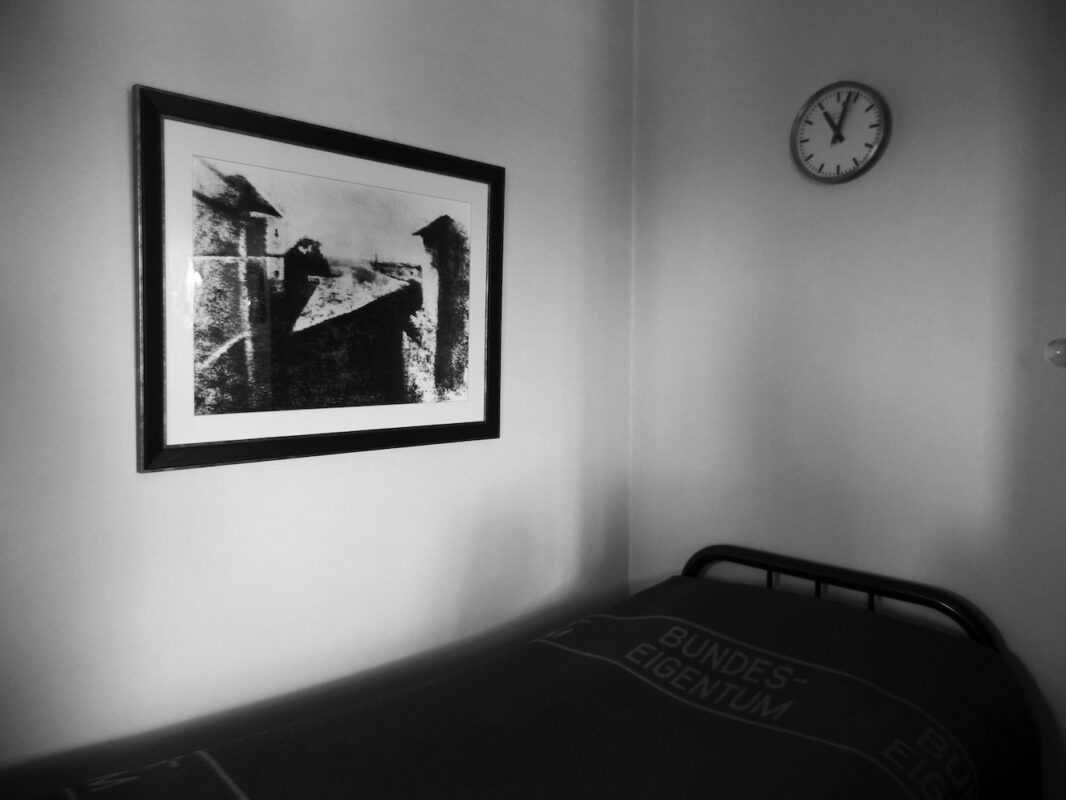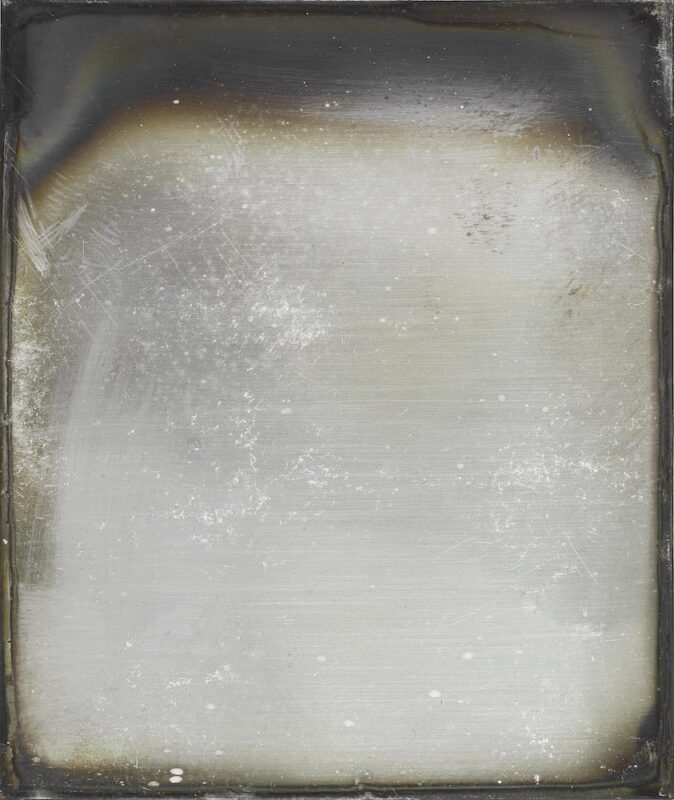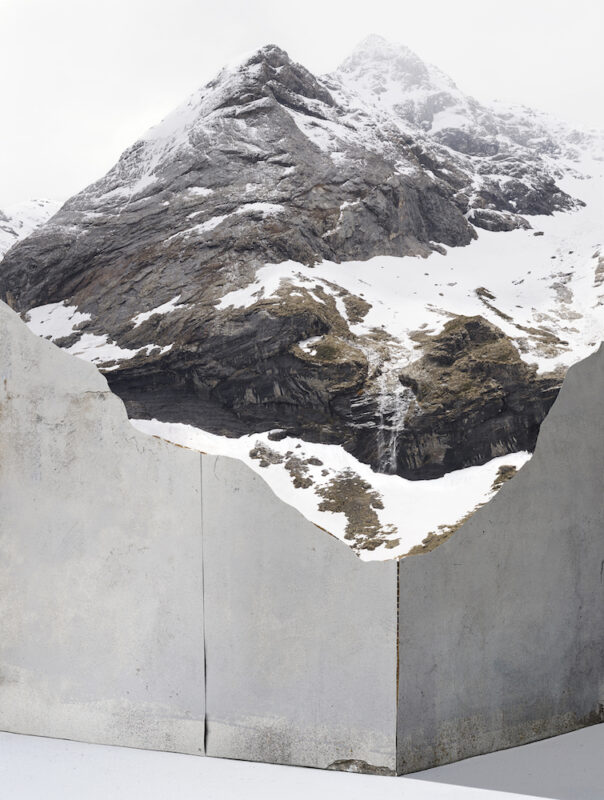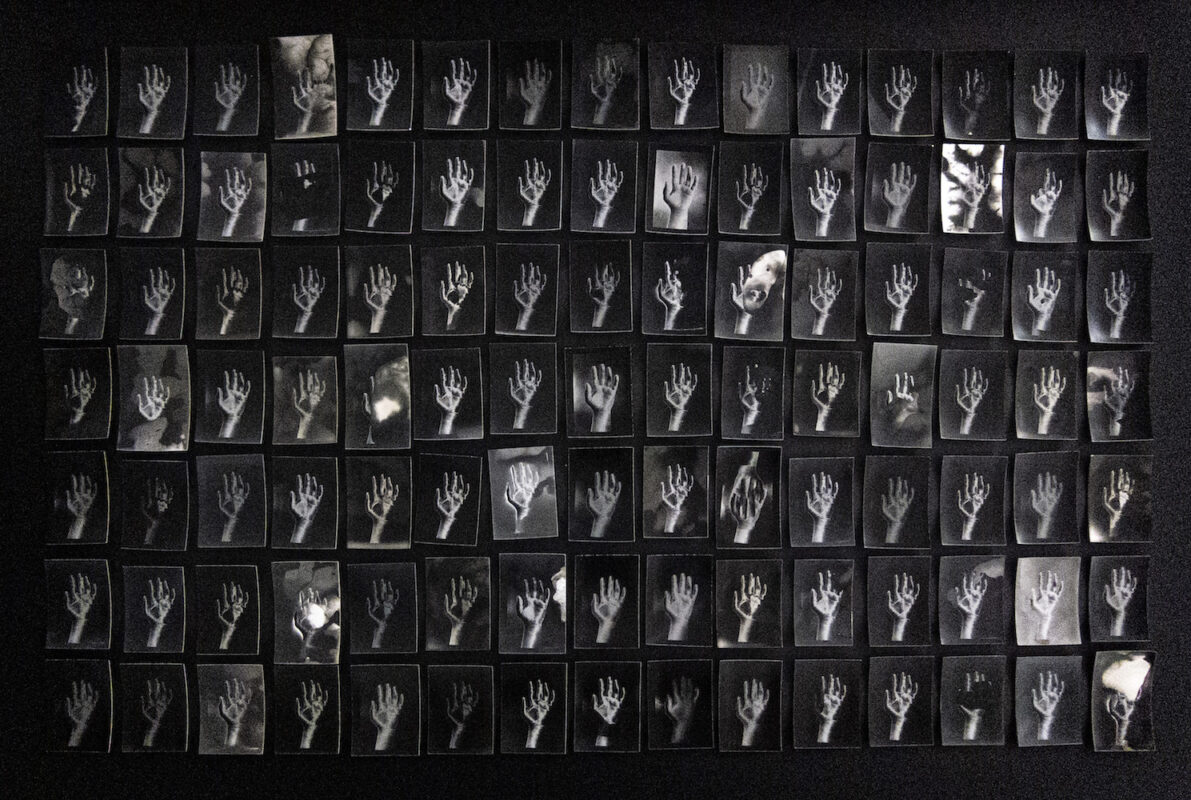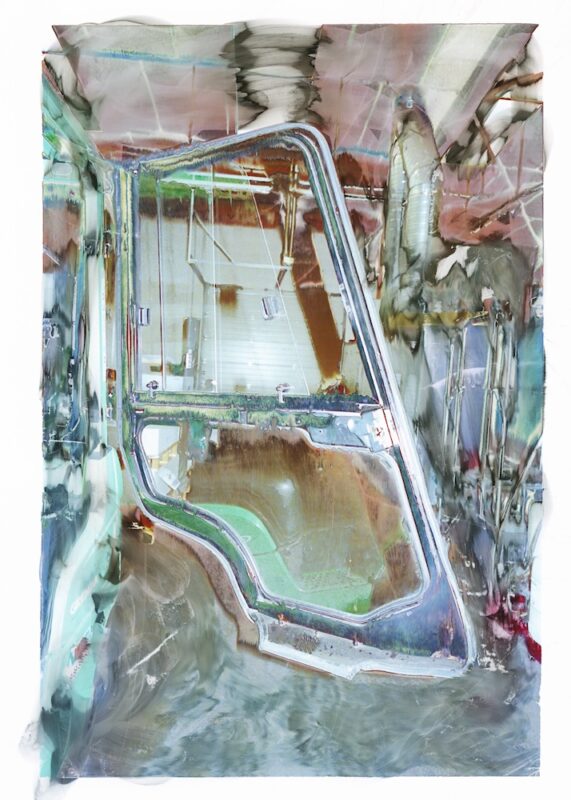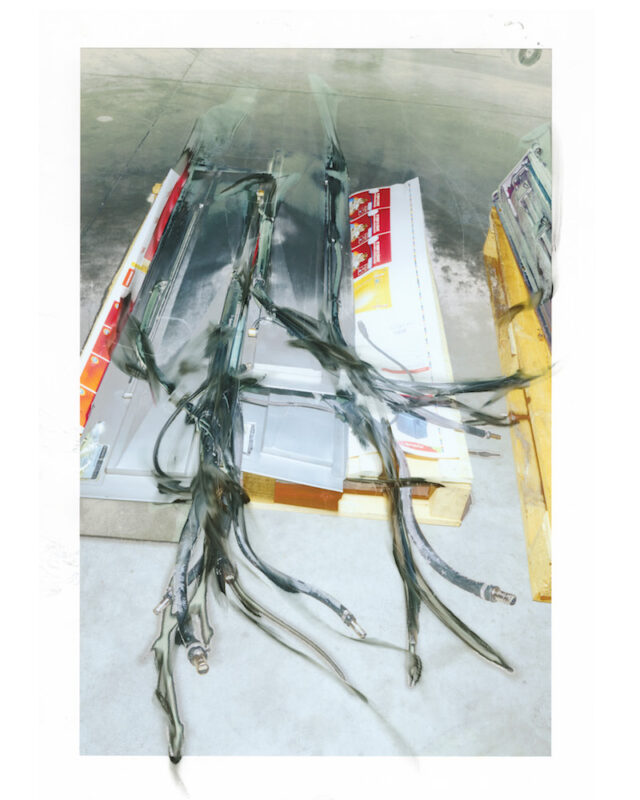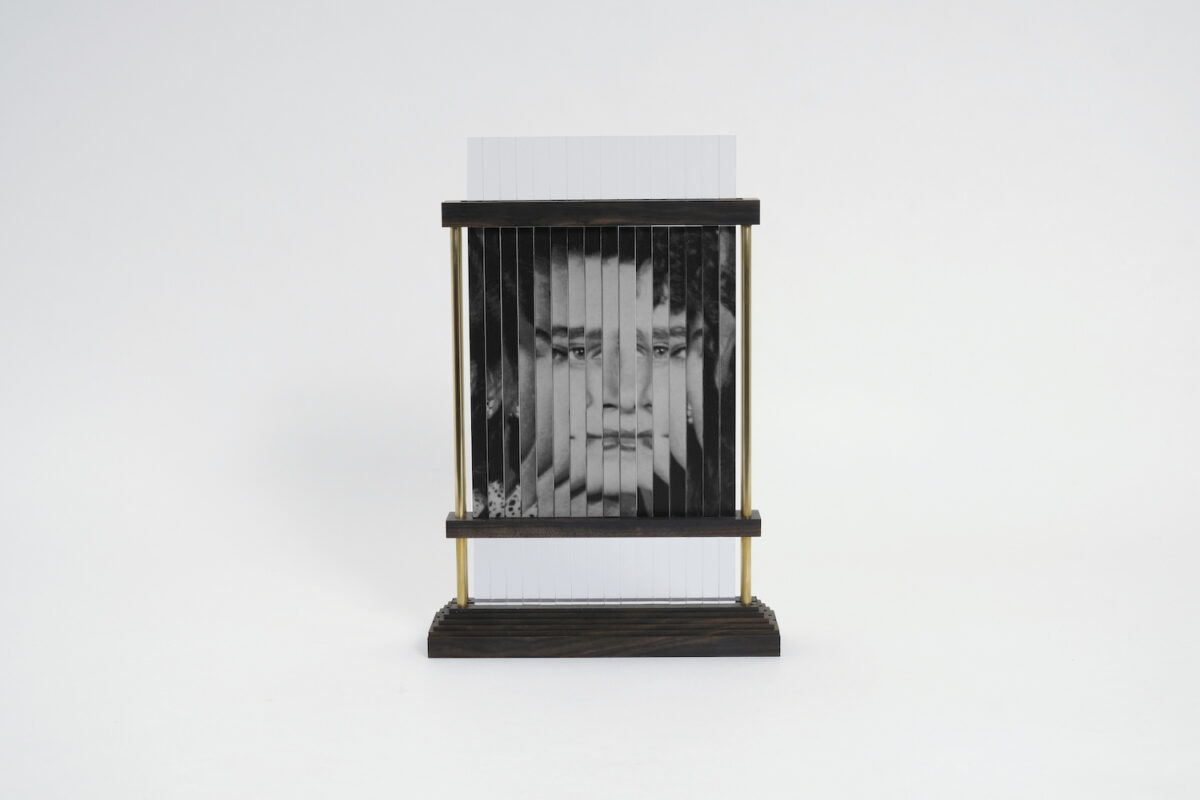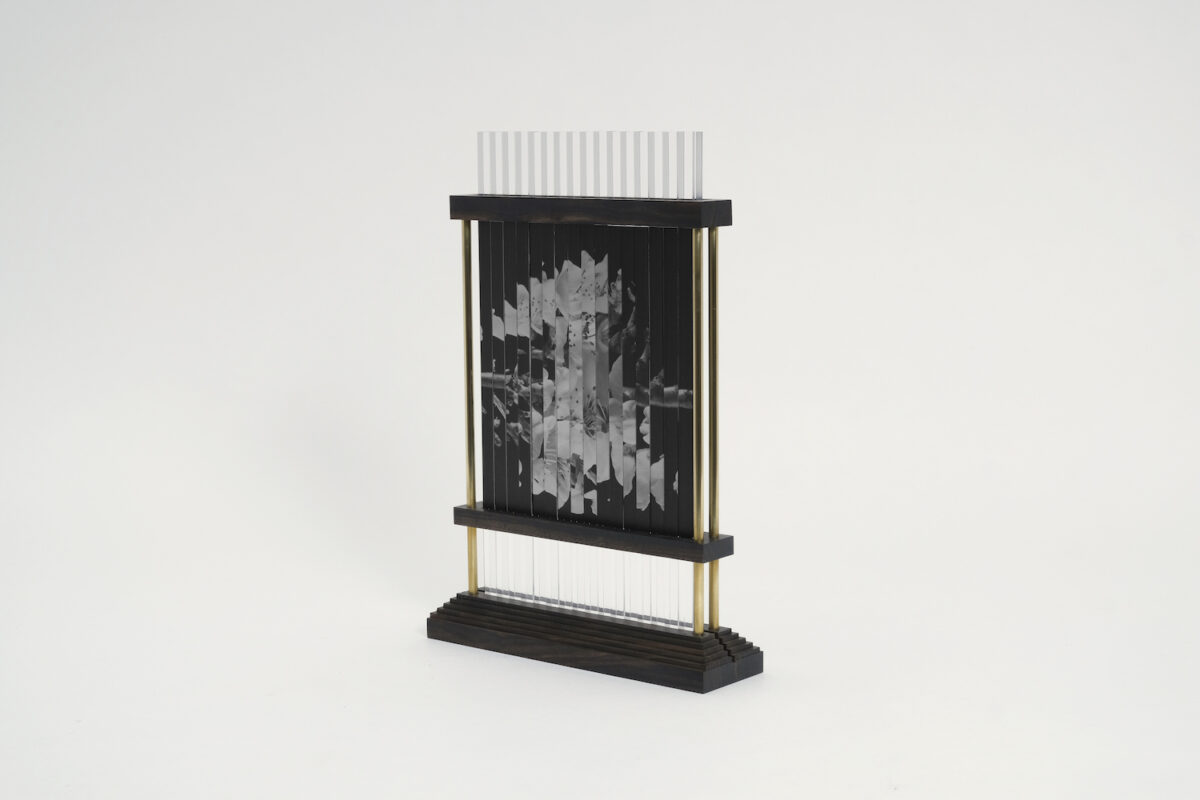Paris Photo 2023
Top five fair highlights
Selected by Alessandro Merola
Paris Photo has returned to the Grand Palais Éphémère with a diverse line-up of ambitious solo, group and thematic gallery presentations. Amongst the highlights, contributions by artists working across mixed-media make for some of the most memorable viewings. Here are five standout displays from the fair’s 26th edition – selected by 1000 Words Assistant Editor, Alessandro Merola.
Alessandro Merola | Fair highlights | 9 Nov 2023
1. Bruno V. Roels, Gold Giants
Gallery FIFTY ONE
There is no shortage of fascinating flora at this year’s edition – from an Anna Atkins’ cyanotype all the way through to Hanako Murakami’s thermographies – but the cranked-up, sci-fi-esque palms of Bruno V. Roels are utterly hypnotic. Each of the works presented across an eight-metre-long, old rose wall at Gallery FIFTY ONE has its own character, mood and texture, yet all are interrelated and function as variations on one image. Nearby, the warbly ripples of distortion in “Magic Lantern (Palmographs)” are filled with anxiety and encroaching dread, whilst the squiggle-painted “Figura Serpentinata (Demeter)” has an air of sinful artificiality. Through this series of unaffected, unsentimental gestures of dissolution – stretched to infinity with deadpan irreverence – Roels loops us back to the ways in which we continually seek out familiar shapes and icons. Of course, these ventures comprise only the latest chapter of Roels’ playing with paradise. One feels he isn’t far off repeating it to the point of emptiness.
2. Marguerite Bornhausser, When Black is Burned
Carlos Carvalho
Marguerite Bornhausser is becoming a fixture around these premises, not least for the fact she is currently completing a residency exploring the Grand Palais’ renovation. Unveiling reworked negatives – painted or coloured – from Bornhausser’s new series, When Black is Burned, the two walls at Carlos Carvalho are a reminder that the French artist’s penchant for the experimental – not to mention her taste for deep hues – is only intensifying. This sharp and splashy selection draws on the ways in which light and shadow can unlock the imagination. Indeed, Bornhausser renders what she dreams and not what she sees, not so much confronting but reactivating – or reinventing – sensations through visions outside of time. Also available here is her freshly-printed, hard-back book with Simple Editions, a wholly captivating and riotous object in which the convergence of natural elements and artificial matter suggests that meaning can drift in on a current of air and alight itself on just about anything. If Bornhausser has a crush on beauty, then it is as much for its mystery as for its surface appeal.
3. Hassan Hajjaj, 1445 in Paris
193 Gallery
Hassan Hajjaj’s solo booth at 193 Gallery is as bold as can be, with vibrant camel-print wallpaper and flooring comprising the scenography to the Moroccan’s mixed-media works, which are hung in custom frames made of stuffed olive tins, Arabic alphabet blocks and tyres. They belong to celebrated (and celebratory) series such as My Rockstars and Dakka Marrakchia, and are themselves melting pots, remixing photography with fabrics, commerce with tradition and heritage with globalism. Although unrepentantly decorative, Hajjaj’s works are also critical in that they batt off orientalist clichés, all the while confronting the consumerism that has transformed traditional craft production in the Arab world. Yet, ultimately, it’s the unmistakable, uninhibited sense of rootedness that is Hajjaj’s hallmark. Moroccan mint tea ceremonies and sweets can be enjoyed at the booth, making it the place to be for cross-cultural exchanges (as further emphasised by the exhibition’s title, which invokes the current year in the Hijri calendar). This is Hajjaj’s world of today.
4. Daido Moriyama, ’71, NY
Daniel Blau
At Daniel Blau, the unstoppable Daido Moriyama is represented by 22 staggering new paintings, each splicing consecutive exposures – that is, back-to-back snaps of the same scenes – taken during the photographer’s first trip outside of Japan in 1971. The influences of Andy Warhol and William Klein are there to see in Moriyama’s New York: an overwhelming and chaotic chronicle bestowed, in black and bronze, by a narrator whose finger seems to be as firmly on the city’s pulse as the camera’s shutter release. What is at stake here is a kind of unveiling in which Moriyama seeks to grasp what is lurking, hidden beneath the surface, or in-between the negatives. By juxtaposing different perspectives, ruptured in time, he delves into his memories, confronting them – like a mirror – with the materiality of the world. The stand, simultaneously, blasts us into space with a curious selection of photographs derived from galactical missions in the 1960s and 70s, including Friendship 7, in which John Glenn became the first man to orbit the earth. He did it solo, and has a dazzling shot of space particles to show for it. You can’t help but feel his was a quest for truth not unlike Moriyama’s on earth.
5. Rebekka Deubner, Strip
Espace Jörg Brockmann
The valedictory photograms on display at Espace Jörg Brockmann constitute the most poignant and affecting work at this year’s Curiosa. Convening various items from the wardrobe of Rebekka Deubner’s deceased mother, what Strip offers is no mere catalogue, but, rather, a kind of séance. The mosaic-like hang heightens the disembodied and untethered quality of the photograms, whose shifts in scale – often zooming into tiny tears and frays – evoke the yearning for physical closeness to the departed. Although the tight crops teeter towards abstraction, Deubner never compromises her concern for detail and texture. The presentation of a video work in which the artist interacts with her mother’s old items – she ties her laces, applies lipstick and pulls out a tissue from a pocket – creates an intriguing tension with the ethereal and ghostly photograms. After all, it is by way of Deubner’s cameraless approach that she resists any sense that she is fighting against evanescence. Instead, she evokes the nuanced, unresolved conflict between holding on and letting go; between what can be touched and what can only be felt. ♦
Paris Photo runs at the Grand Palais Éphémère until 12 November 2023.
—
Alessandro Merola is Assistant Editor at 1000 Words.
Images:
1-“Unfinished Landscape” (2023) © Bruno V. Roels. Courtesy of the artist and Gallery FIFTY ONE.
2-“Gold Giant #3” (2021) © Bruno V. Roels. Courtesy of the artist and Gallery FIFTY ONE.
3-“Also Protected By Sharp Spines And Needles” (2023) © Bruno V. Roels. Courtesy of the artist and Gallery FIFTY ONE.
4-“Untitled” from When Black is Burned (2023) © Marguerite Bornhausser. Courtesy of the artist, Carlos Carvalho and Simple Editions.
5-“Untitled” from When Black is Burned (2023) © Marguerite Bornhausser. Courtesy of the artist, Carlos Carvalho and Simple Editions.
6-“Garage Hajjaj (BW)” (2003/1424) © Hassan Hajjaj. Courtesy of the artist and 193 Gallery.
7-“n.t.” from ’71 NY (1971/2023) © Daido Moriyama Photo Foundation. Courtesy of Akio Nagasawa Gallery.
8-“Fireflies Outside Friendship 7: First Human-Taken Photograph from Space” (1962) © NASA/John Glenn. Courtesy of Daniel Blau.
9-“#11” from Strip (2022–23) © Rebekka Deubner. Courtesy of the artist and Espace Jörg Brockmann.
10-“#48” from Strip (2022–23) © Rebekka Deubner. Courtesy of the artist and Espace Jörg Brockmann.

